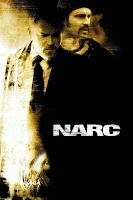Henna: Its History, Significance, and Artists
Photos and henna designs by Radhia Ali
Henna (also known as Mehendi) is a paste that is made with a powdered form of the henna plant. The earliest use of henna goes back to around 9,000 years ago in Egypt. It has also been a part of many South Asian and Middle Eastern countries for centuries. Henna has cultural and spiritual uses, but it was also used in these countries due to its natural cooling properties to help regulate body temperature.
Henna is ambiguous in its uses and can be used for cosmetology, medicine, religious purposes, celebration, spirituality, and more! It has been used as a natural hair dye that gives a rich and vibrant orange shade to one's hair. Nowadays in the beauty world, companies like LUSH Cosmetics have begun selling henna as hair dye and people have begun using it to create fake freckles. However, it is mainly used in celebration during special occasions such as weddings and holidays.
Many people of different cultures and ethnicities apply henna and based on the culture, the henna designs can vary! For example, North African henna designs consist of straighter lines and are more geometrical, whereas Indian henna designs contain more swirls and mandalas.
As Regent Park has a large Muslim, South Asian, and African population, many people in the community seek to get their henna done especially around Eid. With the demand soaring near Eid al-Adha just a few weeks ago, many henna artists from Regent Park received loads of inquiries and bookings!
Radhia Ali, one of the many talented henna artists in Regent Park talks a little bit about her experience being a henna artist, what drew her to it, and how it helps her connect with her culture.
“Growing up, I didn't have anyone to go to for henna especially during Eid. It made me realize how convenient it would be if I learned how to do it.
The thing I enjoy most about practicing henna is the fact that my skills have evolved to the point where now I am able to apply henna on others and that I have been able to start a small business with it! This makes me so happy that now there are other girls coming to me and looking up to me.
Doing henna definitely makes me feel more connected to my culture as I started doing and practicing henna for the sake of my culture. Sometimes we forget that every culture has its own sacred set of things that don't collide with other cultures. This is what makes every culture unique in its own way. Doing henna has taught me the deep value of my culture. I think I feel the most connected to my culture when I'm doing henna with the combination of listening to bollywood music. It reminds me of back home and I absolutely love it!”
Applying decorative henna is a task that requires focus, stability, and creativity. All of the henna artists in Regent Park are immensely talented at what they do.
To support Radhia’s henna journey, book an appointment, or have inquiries, follow @mehendi.lagao on Instagram!
Written by
Saima Islam
Journalist
FOCUS Media Arts Centre




Comments
Post a Comment